In recent years, the field of robotics has undergone a significant transformation with the emergence of swarm robotics. Swarm robotics is a relatively new field that involves the coordination and cooperation of multiple robots working together to achieve a common goal. This approach to robotics draws inspiration from nature, specifically the behavior of social insects, such as ants and bees, that work together in organized colonies to accomplish tasks.
Definition of Swarm Robotics
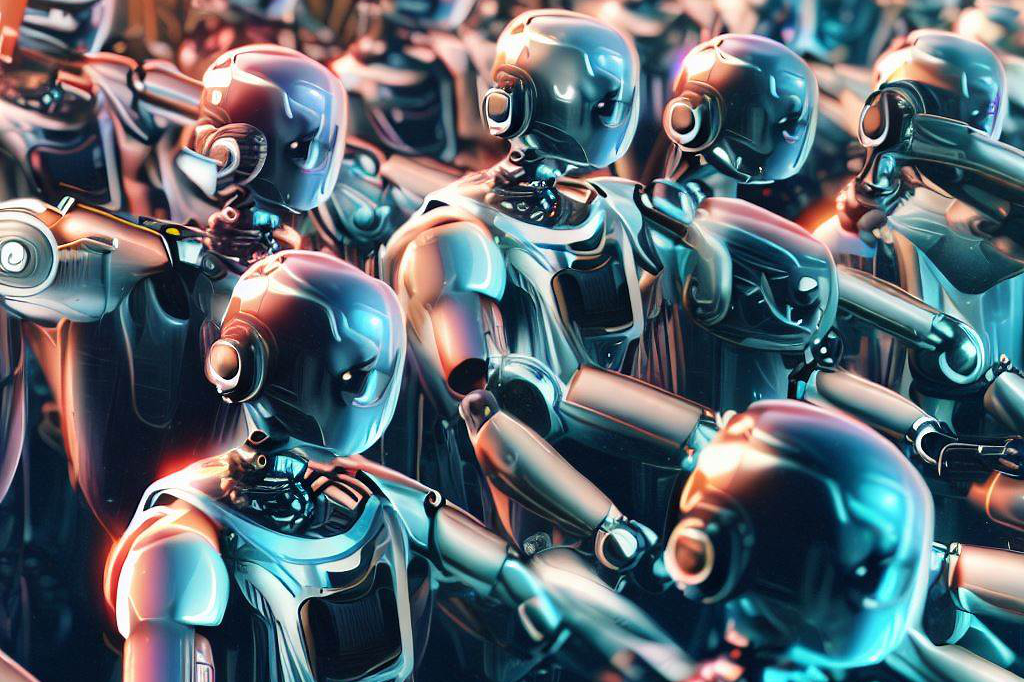
Swarm robotics can be defined as a type of collective intelligence where groups of robots are designed to work together in order to complete complex tasks.
These robots communicate with each other and make decisions based on local information, rather than relying on a centralized control system.
In contrast to traditional single-robot systems, swarm robotics involves large numbers of relatively simple robots that can collectively perform complex tasks.
One key aspect of swarm robotics is emergent behavior, where complex group behaviors arise from interactions between individual robots. For example, when a group of robots are tasked with transporting objects across a workspace, they will naturally self-organize into efficient teams that work together to optimize the task at hand.
Importance of Collective Intelligence in Machines
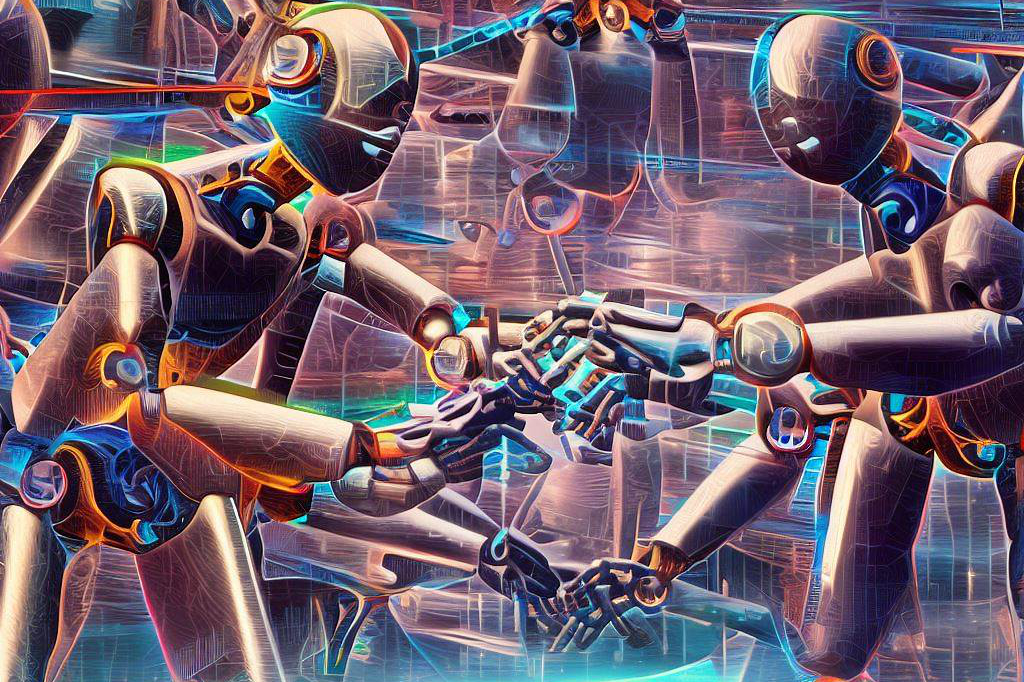
Collective intelligence is an essential component in modern machine design because it enables machines to perform complex tasks more efficiently and effectively than individual machines working alone. By leveraging the power of collective intelligence through swarm technology, we can create systems that are capable of not only performing more complex tasks but also adapting dynamically to changing environments.
Moreover, collective intelligence allows for better task allocation since individual robots in a swarm can specialize in specific roles or functions within the team. This specialization leads to not only increased efficiency but also greater robustness and scalability since any robot failure or malfunction will not affect overall performance significantly.
Brief Overview of Advancements in Swarm Robotics
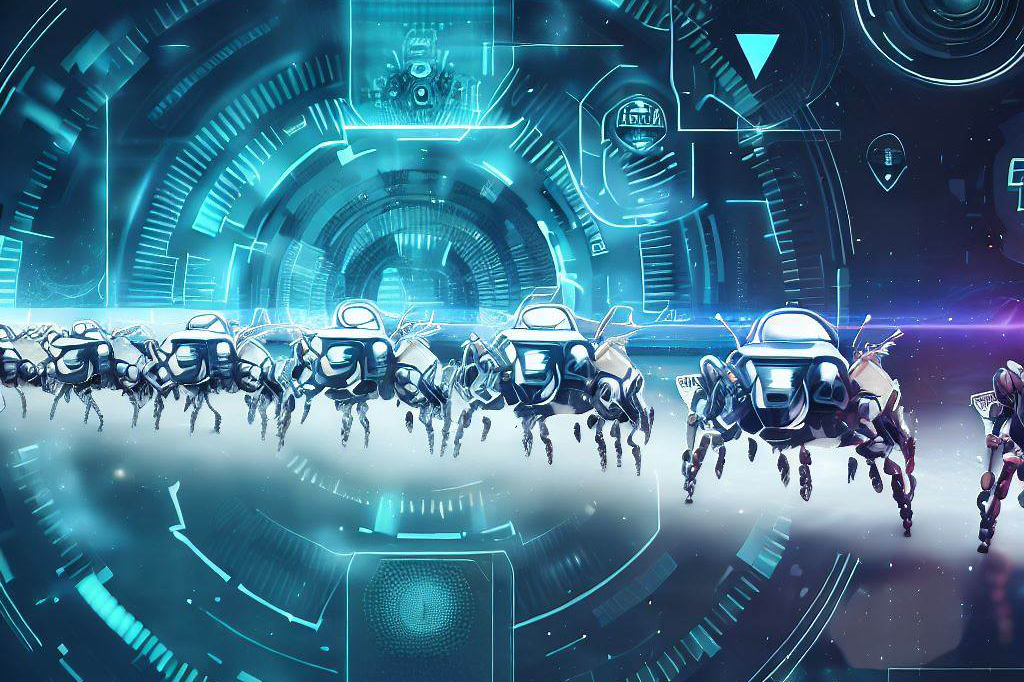
Swarm robotics has come a long way in the past decade. Research has focused on developing robots that can work together more effectively and efficiently. One significant advancement in the field is the development of distributed control algorithms that enable individual robots to make decisions based on local information, which leads to better adaptation to varying environments.
Another area of focus has been on improving communication between robots within a swarm. New technologies have enabled more efficient and reliable communication, which improves coordination and decision-making among the team.
Researchers are exploring new applications of swarm robotics in fields such as agriculture, search and rescue operations, environmental monitoring, and manufacturing. These applications hold immense potential for increasing productivity while enhancing safety across various industries.
The Fundamentals of Swarm Robotics
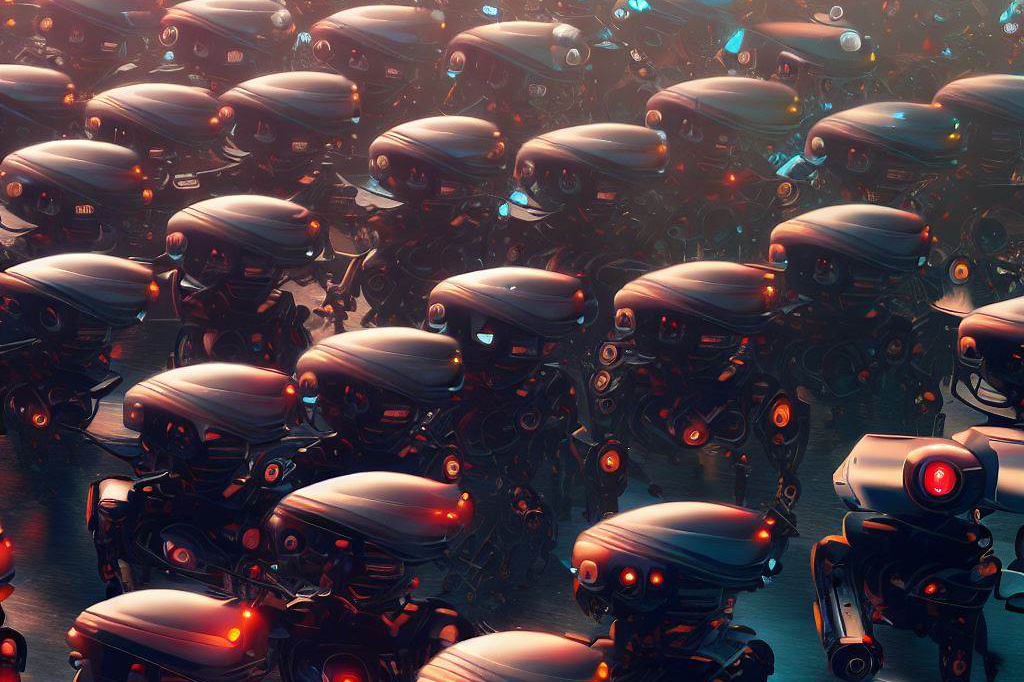
Emergence and Self-Organization
Swarm robots are designed to function as a collective, and their behavior emerges from the interactions among individuals. Unlike individual robots, swarm robots have the ability to self-organize or form patterns without central control. Emergence is a property that arises from interactions among the swarm members; it refers to the complex group behaviors that emerge from simple individual actions.
One example of emergence in swarm robotics is flocking, where the group exhibits coordinated movement patterns like those of birds. Self-organization enables the robots to adapt to changing environmental conditions, which is essential for their continued operation in unstructured environments.
The behavior of an individual robot is dependent on its surroundings and its interactions with other nearby robots. This principle allows for resilience and flexibility within a swarm system.
Decentralized Control and Communication
Unlike traditional robotic systems, where a single central controller coordinates all robot movements, swarm robotics relies on decentralized control systems. In this approach, each robot has its own decision-making capabilities based on sensor data gathered from its environment, allowing them to respond locally instead of relying on centralized decision-making.
The decentralized communication mechanism used by swarm robotics can be achieved through direct or indirect communication between individual robots. Direct communication involves physical interactions such as touch or vibration between nearby bots while indirect communication uses signals like light or sound waves.
Robustness and Scalability
Robustness refers to how effectively a system can function even under challenging conditions such as environmental disturbances or malfunctioning systems within a robot swarm network. The decentralized nature of swarms makes them inherently more resilient against failures when compared with centralized systems because they can continue functioning even if some robots fail.
Scalability is another crucial aspect of swarm robotics because it determines how well the system can adjust when additional units are added or removed. Swarm robots can achieve scalability by enabling new robots to join the system without the need for additional coordination or control mechanisms.
These fundamentals of swarm robotics, including emergence and self-organization, decentralized control and communication, robustness, and scalability, are essential for creating a collective-intelligence-based system. By exploiting these principles, researchers can design more efficient and adaptable systems that can operate in complex environments and contribute to solving real-world problems.
Applications of Swarm Robotics
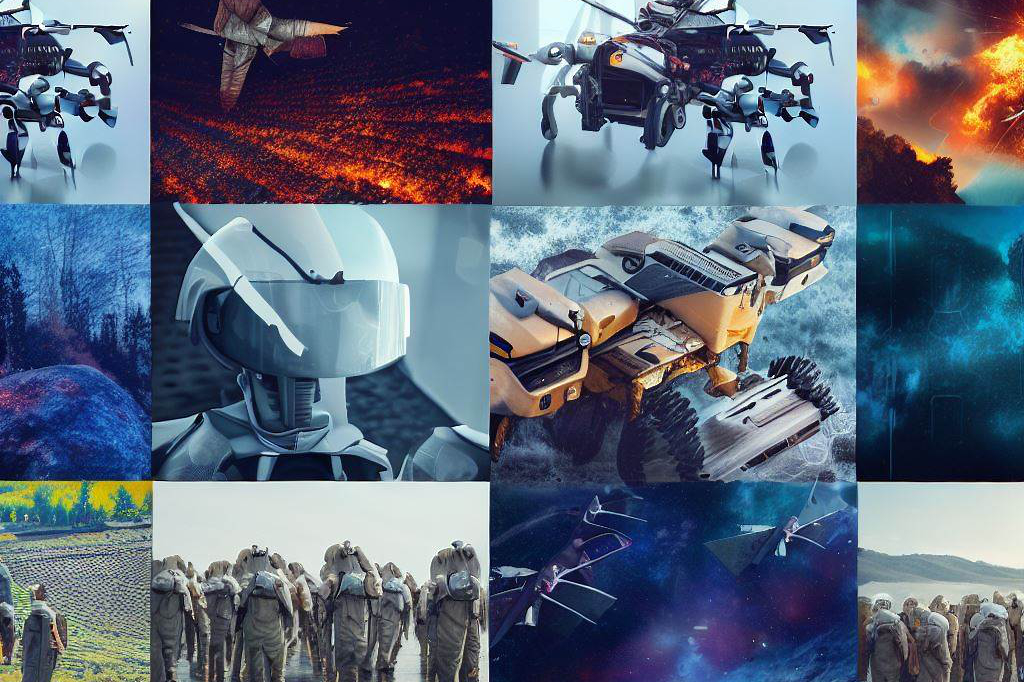
Agriculture and Farming: Harvesting the Benefits of Swarm Intelligence
Swarm robotics has shown significant potential in the field of agriculture. With the use of swarm robots, farmers can automate repetitive tasks such as planting, harvesting, and monitoring crop growth.
The robots can work together to cover large areas quickly and efficiently, allowing farmers to save time and increase productivity. Additionally, swarm robots can be equipped with sensors that detect soil moisture levels, temperature, and other environmental factors that affect crop growth.
This data can help farmers make informed decisions about irrigation patterns and pesticide use to maximize yield while minimizing costs. Furthermore, by automating tasks such as weed removal or pest control with the use of swarm robots, farmers can reduce their reliance on harmful chemicals that damage soil quality.
Search and Rescue Operations: Saving Lives with Collective Action
Another promising application of swarm robotics is in search and rescue operations. In situations where time is crucial for saving lives, a team of swarm robots guided by artificial intelligence algorithms can significantly improve response times and enhance search capabilities.
For example, in a disaster scenario where people are trapped under rubble or debris, a team of swarm robots equipped with cameras could quickly scan the area for any signs of life.
The robots could communicate with each other to ensure that all areas are covered systematically in an efficient manner. Moreover, due to its scalability characteristic, which allows for flexible cooperation among agents regardless of their number or density distribution over space-time; there’s a higher chance for successful results when compared to traditional methods involving human rescuers alone.
Environmental Monitoring: Protecting Our Planet through Technology
Swarm robotics has also proven valuable in environmental monitoring applications such as pollution detection or wildlife tracking. The use of swarms allows for more extensive coverage than traditional monitoring methods while minimizing harm to sensitive habitats.
For instance, drones outfitted with sensors can fly over large areas and use their cameras to capture images of the environment. The data obtained from these images can be studied to identify patterns or changes in the landscape, such as deforestation or wildlife migration.
Moreover, swarm robots could also be used in monitoring water quality by collecting samples and analyzing them for contaminants. These robots could help ensure that our natural resources are protected while providing valuable data for researchers to study.
Manufacturing: Revolutionizing Assembly Lines with Collaboration
Swarm robotics has enormous potential in manufacturing applications and is poised to revolutionize assembly line production. With the use of swarm robots, manufacturers can automate complex assembly lines that require high-precision tasks. For example, imagine a factory where a swarm of robots works together to assemble a car from the ground up.
Each robot is responsible for a particular task such as installing bolts or wiring electrical components. The robots communicate with each other through artificial intelligence algorithms and collaborate seamlessly on building the car’s different parts.
Furthermore, because swarm robotics is scalable and easily adaptable to changes in production requirements; it offers an unprecedented level of flexibility and agility compared to traditional assembly line methods. This means that manufacturers could produce higher-quality products at lower costs while adapting more quickly to changing market demands.
The Role of Artificial Intelligence in Swarm Robotics
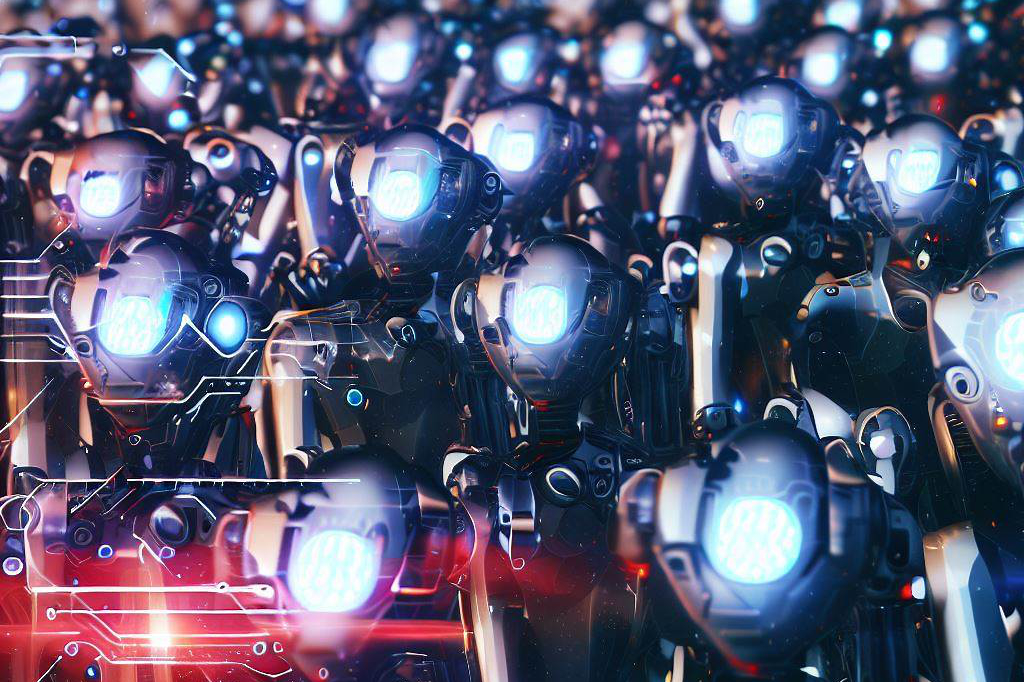
Swarm robotics systems are based on the principles of collective intelligence. However, in order for a swarm to operate effectively, it requires a level of intelligence that can only be achieved through artificial means.
In recent years, artificial intelligence (AI) has made significant advances, which have enabled swarms to operate more intelligently and efficiently. The following sections will discuss some of the ways in which AI is used to improve swarm robotics.
Machine Learning Algorithms
Machine learning algorithms are a subset of AI that enable machines to learn from data without being explicitly programmed. These algorithms can be used to teach swarms how to recognize patterns and make informed decisions based on past experiences.
One example is reinforcement learning, which trains robots by rewarding them for making positive decisions and punishing them for negative ones.
Another example is clustering algorithms, which can help swarms self-organize by identifying groups within the swarm that share similar behaviors or objectives. This enables the swarm to work more efficiently and effectively by dividing tasks among sub-groups.
Neural Networks
Neural networks are another powerful tool used in swarm robotics. A neural network consists of layers of interconnected nodes that process information similarly to the human brain. This allows swarms to learn from experience and make decisions based on complex inputs.
Neural networks can also help with perception tasks such as object recognition or localization. By processing sensor data from multiple robots simultaneously, neural networks enable swarms to build a shared understanding of their environment.
Reinforcement Learning
As mentioned earlier, reinforcement learning is an important aspect of machine learning algorithms that can be used in swarm robotics systems. Reinforcement learning offers an effective way for robotic agents within a swarm to learn optimal behaviors through trial-and-error training techniques.
In reinforcement learning models applied in swarm robotics systems, agents receive rewards for completing specific tasks or objectives, and penalties for undesirable actions. This technique trains the swarm to make decisions that result in the highest reward and, therefore, the best performance.
Reinforcement learning can prove to be an effective way to train robots in swarms since it enables them to learn quickly from one another and improve their collective performance. AI is critical in enabling swarm robotic systems to work together intelligently.
Machine learning algorithms, neural networks, and reinforcement learning are just some of the tools available to help robots within a swarm learn from experience, adapt quickly to new environments, and perform tasks efficiently. As AI continues to advance rapidly, we can expect even greater advances in the use of swarm robotics systems in various fields such as agriculture, manufacturing, and search and rescue operations among others.
Challenges in Swarm Robotics
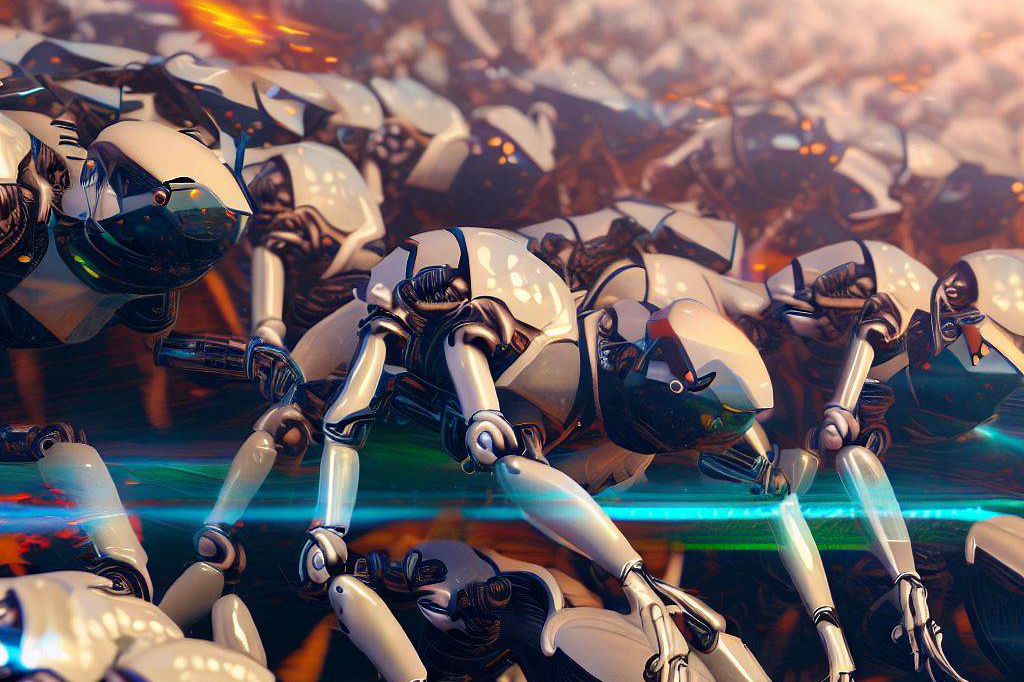
A. Coordination and Communication among Robots:
The Importance of Synchronization and Information Sharing
One of the main challenges in swarm robotics is achieving effective coordination and communication among a large number of robots, especially when they are required to perform complex tasks.
In order to achieve this, the robots must be able to synchronize their behavior with one another, share information about their surroundings, and adapt their actions accordingly.
One approach towards addressing this challenge is to use a combination of local communication protocols and global strategies for coordination. Local communication allows each robot to share information with its neighbors, while global strategies enable them to coordinate with the overall swarm.
For example, researchers have developed algorithms that create virtual leaders within the swarm that direct the actions of the other robots based on real-time feedback from sensors. Another important factor for effective coordination is the ability to adapt quickly to environmental changes or unexpected events. This requires not only robust communication but also intelligent decision-making systems that can learn from past experiences and make decisions based on current conditions.
B. Resource Allocation and Management:
The Challenge of Optimizing Efficiency While Maintaining Robustness
Another significant challenge in swarm robotics is managing limited resources such as power, computational capacity, or physical space. Since each individual robot has limited capabilities, it is crucial that resources are allocated efficiently across the entire swarm without compromising performance or robustness. This challenge can be addressed through a combination of centralized planning mechanisms and decentralized control algorithms. Centralized planning mechanisms can help optimize resource allocation at a higher level by taking advantage of global information about resource availability while decentralized control algorithms can ensure local efficiency and robustness by enabling each robot to make its own decisions based on local observations. For example, researchers have developed algorithms that allow robots within a swarm to dynamically adjust their speed or energy consumption based on real-time feedback from sensors about available resources. These algorithms enable the swarm to optimize its collective behavior while maintaining its overall performance and robustness.
C. Environmental Adaptation:
The Challenge of Coping with Changing Environments
Swarm robots are often required to operate in complex, dynamic environments where conditions can change rapidly and unexpectedly. This presents a significant challenge for effective coordination, communication, and resource allocation. To overcome this challenge, researchers are developing algorithms that enable swarm robots to adapt quickly to changes in their environment. For example, some algorithms allow robots to learn from past experiences and adjust their behavior based on current conditions. Others use predictive models to anticipate future changes in the environment and adjust their behavior accordingly. Overall, environmental adaptation requires a combination of sensing capabilities, intelligent decision-making systems, and effective communication protocols. By addressing these challenges, researchers hope to create swarms of robots that can operate effectively in a wide range of complex environments and help solve some of the most pressing problems facing society today.
Potential for Increased Efficiency, Productivity, and Safety with the Use of Swarm Robots
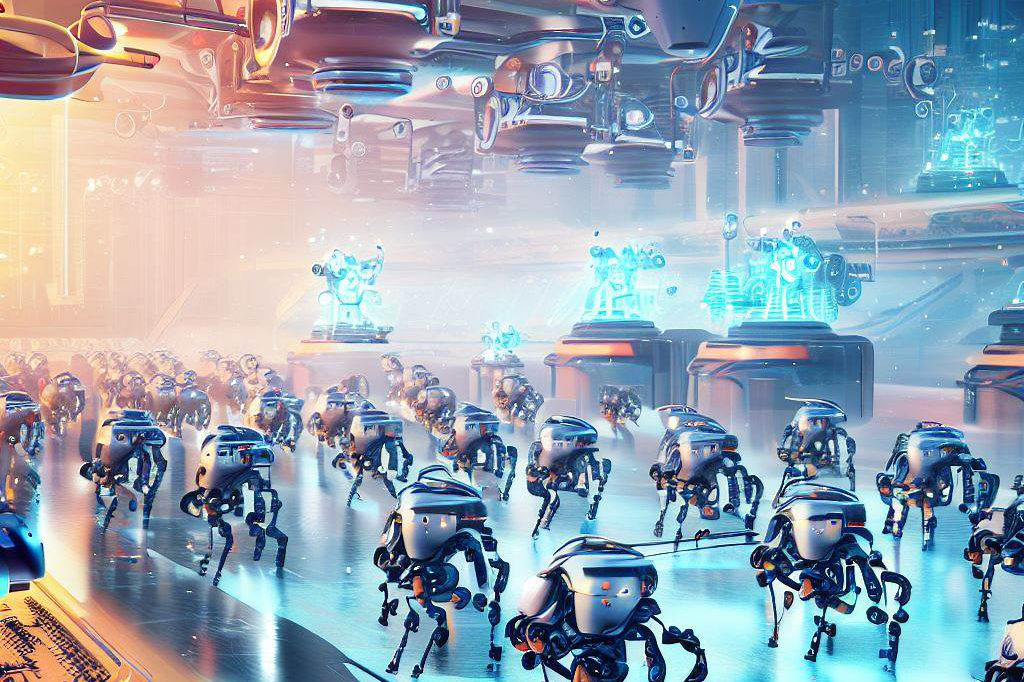
Swarm robotics is a powerful tool that has already demonstrated significant potential in various fields. The ability of swarm robots to work together seamlessly and efficiently has led to improved productivity and reduced costs in manufacturing processes. In agriculture, swarm robots have been used to perform tasks such as seeding, watering, and harvesting crops with increased precision and speed.
Swarm robots are also finding their way into search-and-rescue operations, where they can cover a larger area than a single robot or human could ever achieve. Moreover, by working as a team, these machines can quickly locate survivors in disaster zones while keeping first responders safe from harm.
In the future, swarm robotics might also be used in healthcare settings to assist doctors and nurses with repetitive tasks or provide patients with more personalized care. The possibilities are endless for the use of swarm robotics as we continue to explore new applications.
The Need for Further Research to Overcome the Challenges Associated with Implementing Swarms
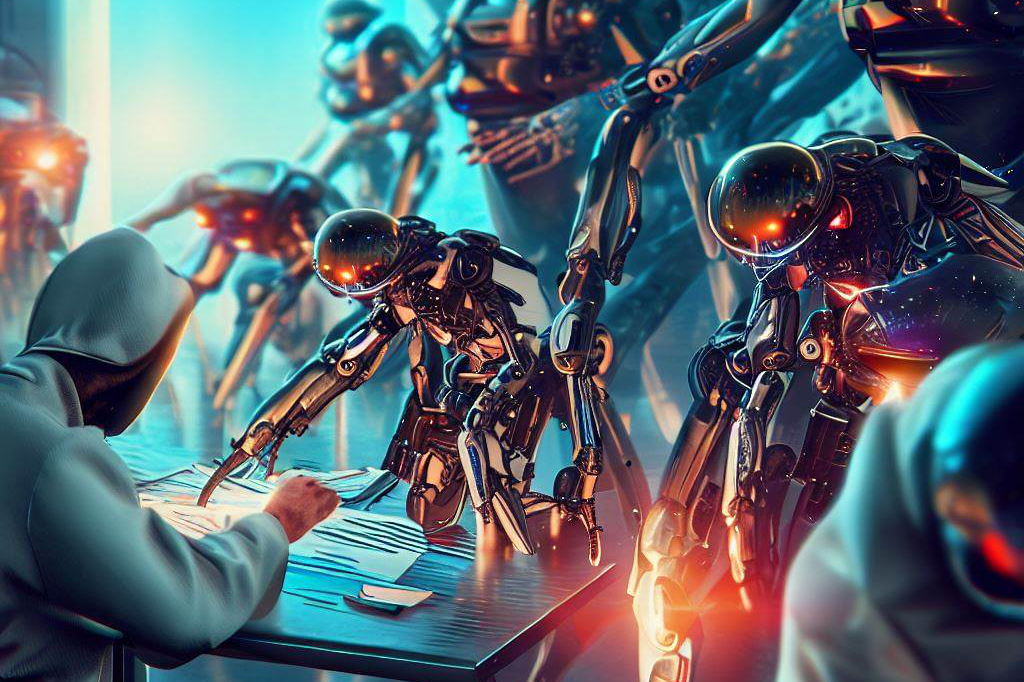
As promising as swarm robotics may seem, there are still numerous challenges that must be overcome before this technology can become mainstream. One critical issue is communication among swarm robots, since they need to exchange information effectively to function correctly. Additionally, they require robust environmental adaptability algorithms that allow them to handle unexpected situations without disrupting their workflow.
Resource allocation is another challenge associated with implementing swarms since each robot’s battery life and processing power must be managed optimally without negatively affecting overall performance levels. There is also a need for better coordination between individual units in the network.
To adequately address these obstacles, it requires extensive research on algorithms related to machine learning techniques like reinforcement learning neural networks. While there have been significant advancements in these areas recently, researchers will need more time before this technology becomes fully accessible across various industries.
Impact on Society as a Whole with the Integration of Collective Intelligence in Machines
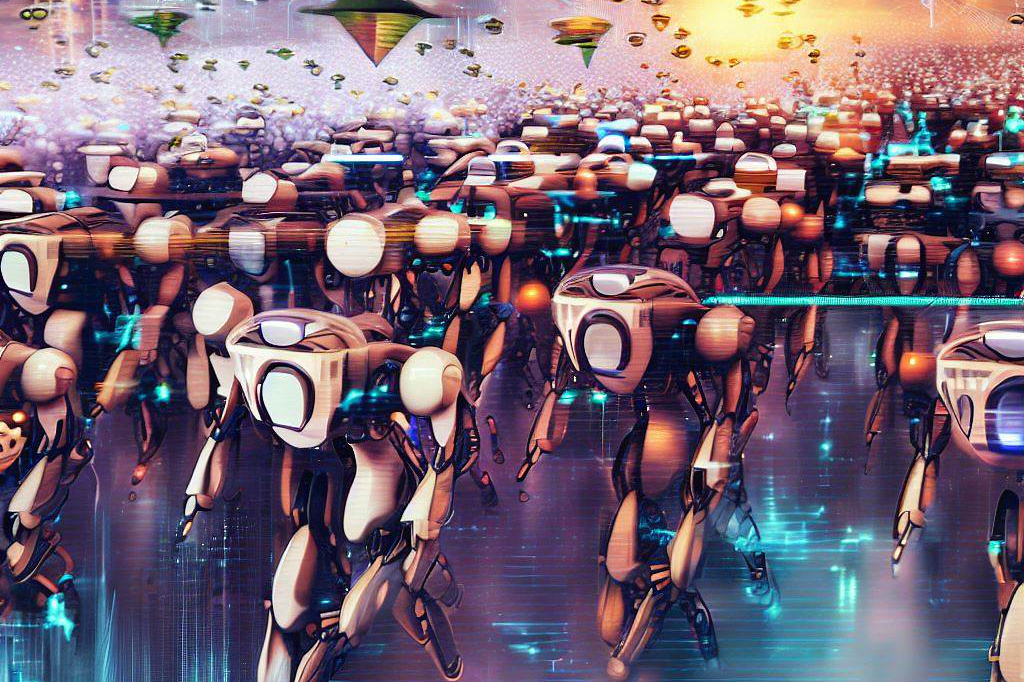
Swarm robotics is well on its way to revolutionizing various industries, but this technology’s impact goes beyond just businesses. The integration of collective intelligence into machines can improve the quality of life for individuals who depend on automation for their basic needs. For instance, swarm robots could help elderly individuals with various daily tasks that would otherwise require intensive care supervision.
This would allow seniors to live independently while still receiving the help they need. Furthermore, by automating repetitive and tedious work, swarm robotics can free up time and resources for more essential tasks such as scientific research or creative endeavors.
Invasive species monitoring and control can also benefit from swarm robots’ collective intelligence, as they can work together to identify and eradicate pest populations without harming other beneficial organisms. Swarm Robotics has demonstrated its potential to become a game-changer across multiple sectors due to its ability to harness collective intelligence among machines.
While there are still challenges associated with implementing swarms, the future looks bright with advancements in machine learning algorithms and neural networks. With further research and development, we will see swarm robots integrating into our daily lives on a larger scale for increased efficiency while improving safety standards.

C M, a seasoned editor, journalist, and consultant, is deeply fascinated by the convergence of technology, space, and the future of humanity.
With a particular interest in transhumanism, futurology, and the philosophical and ethical dimensions of these domains, C M serves as the lead contributor to TranscendSphere and SpaceSpotlight.
When not penning insightful articles on these rapidly evolving fields, C M indulges in their love for podcasts and books, proudly embracing their status as a ‘Happy Nerd Extraordinaire!’





